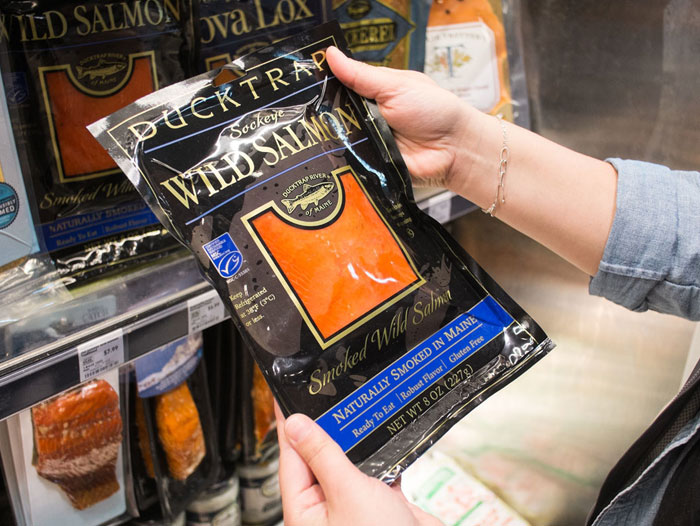During Heart Health Month, the Marine Stewardship Council Encourages Americans to Choose Seafood that’s ‘Good for You and the Ocean Too’
February 3, 2020 | 4 min to read

The AHA and USDA recommendations are based on heart-health benefits shown from consuming one to two servings of omega-3 rich seafood per week, or about 250-500 mg of omega-3s a day, according to nonprofit organization and MSC partnerSeafood Nutrition Partnership (SNP). One study1 found that eating one to two servings of fatty fish a week reduces the risk of dying from heart disease by 36%.
“Fish and shellfish are very important parts of a heart-healthy diet,” said SNP’s Valerie Agyeman, a registered dietitian. “Seafood is a major source of healthful omega-3 fats and are also rich in nutrients such as vitamin D and selenium, high in protein, and low in saturated fat. There is strong evidence that eating fish or taking fish oil is good for the heart and blood vessels.”
According to a2018 GlobeScan study commissioned by MSC, 70% of Americans believe supermarkets’ and brands’ claims about sustainability should be clearly labeled by an independent organization. As the first global science-based seafood certification program to be recognized for rigor and credibility by the United Nations, the MSC blue fish label is meeting increasing consumer demand for independent verification of sustainability claims by brands. The MSC works with the fishing industry, scientists, and conservation groups to create the world’s leading standard for sustainable seafood ensuring seafood is fished from stocks with healthy populations; caught with minimal impact on the marine environment; and in an area with effective, responsive, and responsible management.
“Eating seafood is integral to our heart health, and choosing sustainable seafood is integral to the ocean’s health,” saidAmy Gorin, MS, RDN, a registered dietitian in New York City. “For us, seafood provides essential nutrients – including omega-3 fatty acids needed for heart, brain and eye health. For the oceans, choosing sustainable seafood – such as wild-caught fish labeled with the MSC blue fish – means choosing seafood that’s good for you and for the oceans, too.”
Throughout Heart Health Month, the MSC will offerrecipe inspiration on its blog and on social channels – @MSCBlueFish on Instagram, Twitter, and Facebook. Seafood dishes made with MSC certified fish are good for the entire family – from approachable, easy meals the entire family will love to sustainably-sourced pet food for your furry family members – continuing the conversation around seafood that’s good for you and good for the ocean.
“There are more than 3,000 products with the MSC blue fish label in U.S. stores,” said Brian Perkins, regional director for the Americas at the MSC Marine Stewardship Council. “Whether recipes call for frozen, canned or fresh fish, taking the simple step to look for the MSC blue fish label before you buy helps to protect oceans from overfishing, supports fishermen and fishing communities, and promotes traceability from ocean to dish.”
ABOUT THE MARINE STEWARDSHIP COUNCIL
The Marine Stewardship Council (MSC) is an international non-profit organization. Our vision is for the world’s oceans to be teeming with life, and seafood supplies safeguarded for this and future generations. The MSC blue fish label and certification program recognizes and rewards sustainable fishing practices and is helping create a more sustainable seafood market. More than 370 fisheries in over 36 countries are certified to the MSC’s Standard. These fisheries have a combined annual seafood production of over twelve million metric tons, representing approximately 15% of global marine catch. More than 50,000 seafood products worldwide carry the MSC label. For more information visitwww.msc.org or follow @MSCBlueFish on social media.
1 Mozaffarian D, Rimm EB. Fish intake, contaminants, and human health: evaluating the risks and the benefits. JAMA. 2006; 296:1885-99.
